Prospecting & Detecting
Follow the Line
February 2018 by Ray Mills
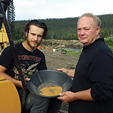 Four nuggets, ranging from one to four pennyweight, had been found originally. All four nuggets were found in a line about ten feet apart from each other.
Four nuggets, ranging from one to four pennyweight, had been found originally. All four nuggets were found in a line about ten feet apart from each other.
Hard Rock 101: Blasting With Kinepak Explosives
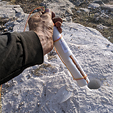 Fortunately, there are products on the market that can address these problems and make a small-scale mining operation feasible.
Fortunately, there are products on the market that can address these problems and make a small-scale mining operation feasible.
A Good Start
We split up in order to cover a larger area and found good color almost everywhere. The bedrock was shallow on both sides of the river, but the inside bend was where we concentrated our prospecting.
Weathering, Erosion and Placers
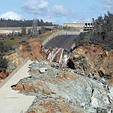 The big interest to prospectors thinking about the effect of erosion is not what might happen long into the future, but what they might find in the rivers later this summer when the water levels go down.
The big interest to prospectors thinking about the effect of erosion is not what might happen long into the future, but what they might find in the rivers later this summer when the water levels go down.
Potholes and Other Bedrock Traps
Potholes in bedrock can trap placer minerals and even be glory holes. They are, at least, interesting geologic phenomena, and at best, a treasure trove of gold nuggets.
A Long Dry Spell
 Just three weeks ago one of our prospecting team members decided to go back to this location on his own. He had a new detector and wanted to try it out some.
Just three weeks ago one of our prospecting team members decided to go back to this location on his own. He had a new detector and wanted to try it out some.
Goal Setting and Rock Tossing
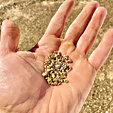 Day three was a copy of day two. I started real low in the long wash to see if I could prove how far down the gold had made it.
Day three was a copy of day two. I started real low in the long wash to see if I could prove how far down the gold had made it.
The Bucking Room
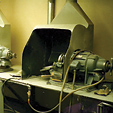 Since this position was the least desirable due to the hard physical labor, the bucking room was used as punishment. Do you have a mediocre worker? Bad attitude? Off to the bucking room!
Since this position was the least desirable due to the hard physical labor, the bucking room was used as punishment. Do you have a mediocre worker? Bad attitude? Off to the bucking room!
Subscription Required:
The Bawl Mill
• Our Readers Say
• Ask The Experts - Help with an assay report
• Ask The Experts - How do you ship uranium samples to a lab?
• Legislative and Regulatory Update
• The Hill of Gold
• Bedrock Gold: When It’s There and When It Isn’t
• A Primer on Bitcoin and Other Cryptocurrencies—Part II
• Mass Wasting & Gold Deposits
• The “Push” for Gold—The Great Nevada Adventure Continues
• The Wild Rush to Find More Cobalt—Part I
• PLP and MMAC Update
• The Black Diamond of the Forest
• Melman on Gold & Silver
• Mining Stock Quotes and Mineral & Metal Prices
Free:







